Goldenrod can get a little bit of a bad rap. The aggressive spreading nature of solidago canadensis in many gardens and wild areas throughout New England and up and down the East Coast has made many eager natural gardeners somewhat leery of planting it on purpose.
But to invite Solidago varieties into your garden is to invite a throng of life, a ballet of bees and butterflies (as well as blue-winged wasps, four-toothed wasps, moths, leaf hoppers, midges, and flies, among others) drawn to its vibrant allure.
If you have only struggled with Solidago canadensis (common name Canada goldenrod) and decided it is not something you want to grow – then you would be missing out on a wide selection of other native plants that offer a bounty of bright yellow flowers and late fall blooms.
You know the Canadian Golden Rod by its stature – often as much as 6 feet tall. You might also think it is what causes autumn hay fever – but in fact, it is ragweed (that looks similar) that is the source of all the sinus irritation. (If you are concerned about Allergy causing plants, read these posts)
Personally, I welcome the Canadian variety, but I know it can be a nuisance to many gardeners who don’t have as much space as I do.
As an alternative, these eight plants will give you an opportunity to grow and enjoy native goldenrods in your naturalistic garden – but also choose a variety that will suit your garden design and maintenance goals.
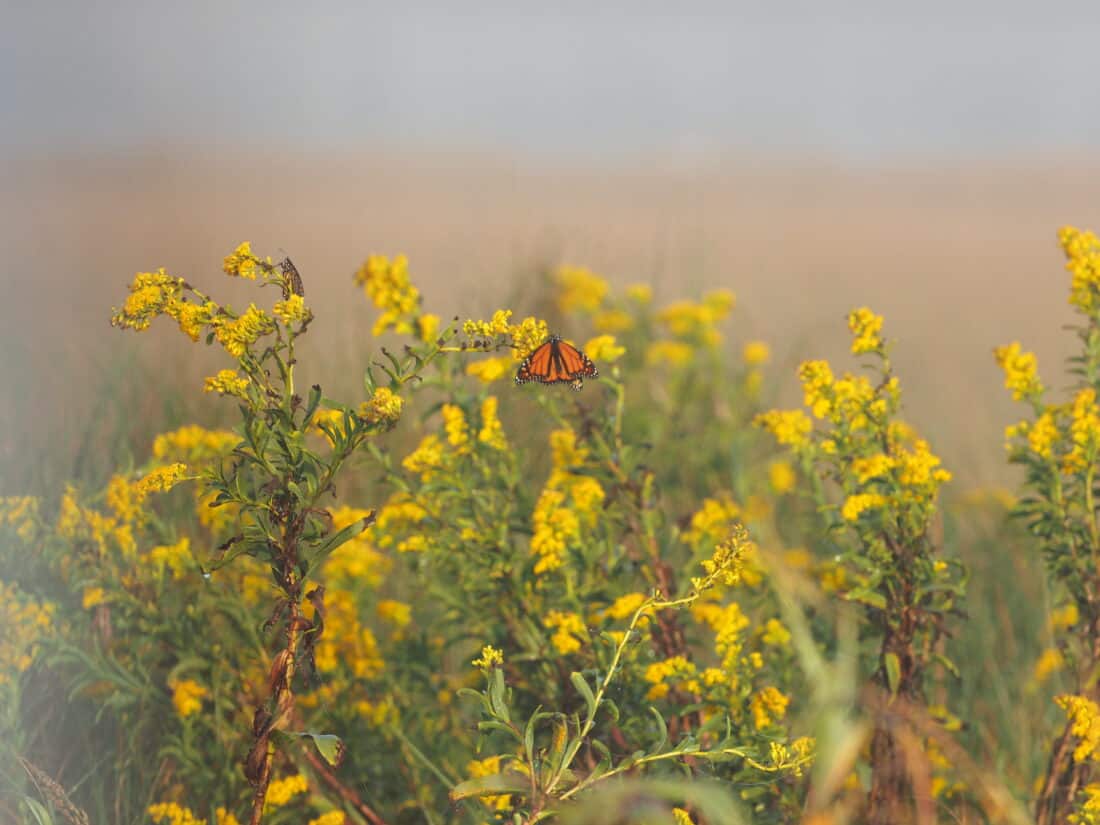
The Best Goldenrod (Solidago) for Your New England Native Garden
As your garden lingers in the soft, waning light, as the growing season ebbs towards its close, there is an opportunity to infuse the last days of the verdant landscape with a touch of wild, native charm.
Amongst the myriad choices, the Solidago stands as a beacon of effortless elegance—its slender stems are crowned with the rich, golden hues and often bushy blooms that are perfect in the garden and the vase.
Solidago is unfazed by the whims of light and generally thrives whether bathed in afternoon sun or nestled in the dappled shade. It will always bring a whisper of the untamed to your garden beds.
So, in the spirit of creating a garden not just seen but felt, where each plant tells its own lush, vivid story, consider the Solidago.
Solidago caesia– Blue Stemmed Goldenrod
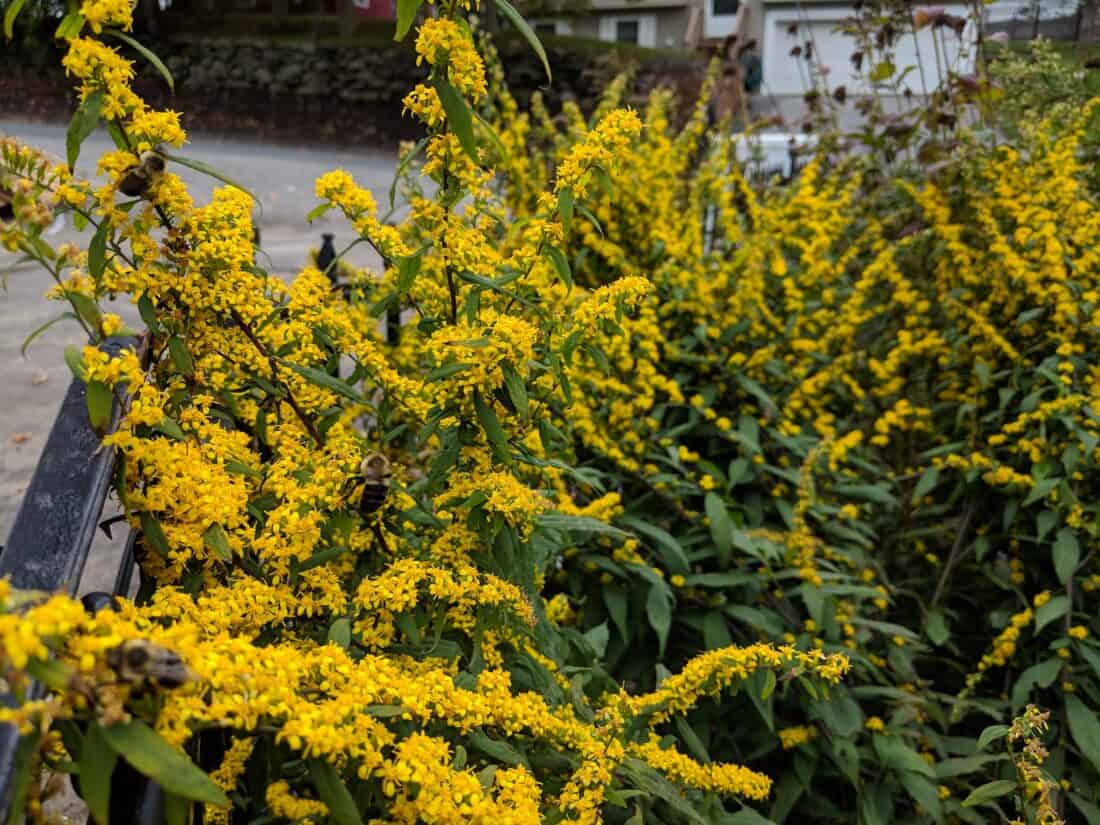
Blue-stemmed goldenrod (solidage caesia) is a northeast native with various distinctive characteristics:
- Native to central and eastern North America and tolerates dry poor soils.
- Clump forming and will not spread aggressively
- Arching and wiry glabrous blue-tinged stems
- Flowers strongest in sun but will grow happily in shade
- It is hardy to zones: 3-9 Bloom and blooms August-October. It is a full sun to part shade plants that will only reach 18-36”.
Solidago flexicaulis– Zig Zag Goldenrod
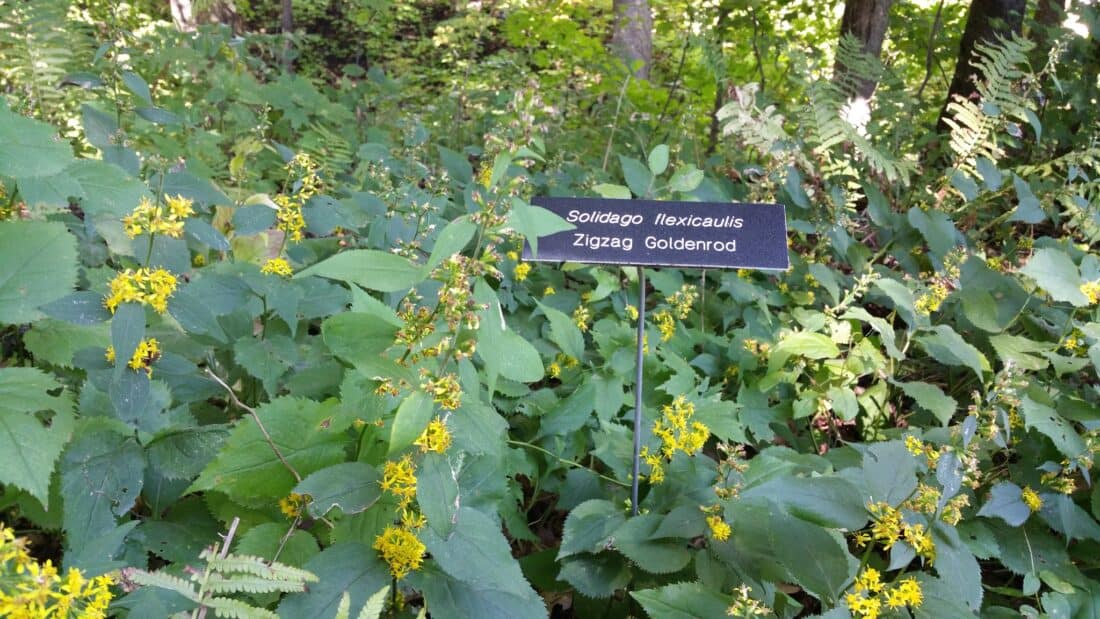
Solidago flexicaulis- Zig Zag Goldenrod is known as the woodland golden rod because of its natural habitat (in shadier wooded areas). It also carries these other distinctive characteristics:
- Stems have distinct zig-zag patterns with delicate yellow flowers.
- Perfect in sun-dappled settings and looks lovely in the open shade at the base of trees.
- Tolerant of clay soils and deer browsing
- It has substantial basal foliage that helps control erosion.
- It is hardy in zones 3-8, and it blooms from July to September. It thrives in more shade than other varieties and will only reach a height of 12-36”.
Solidago graminifolia– Grass Leaved Goldenrod
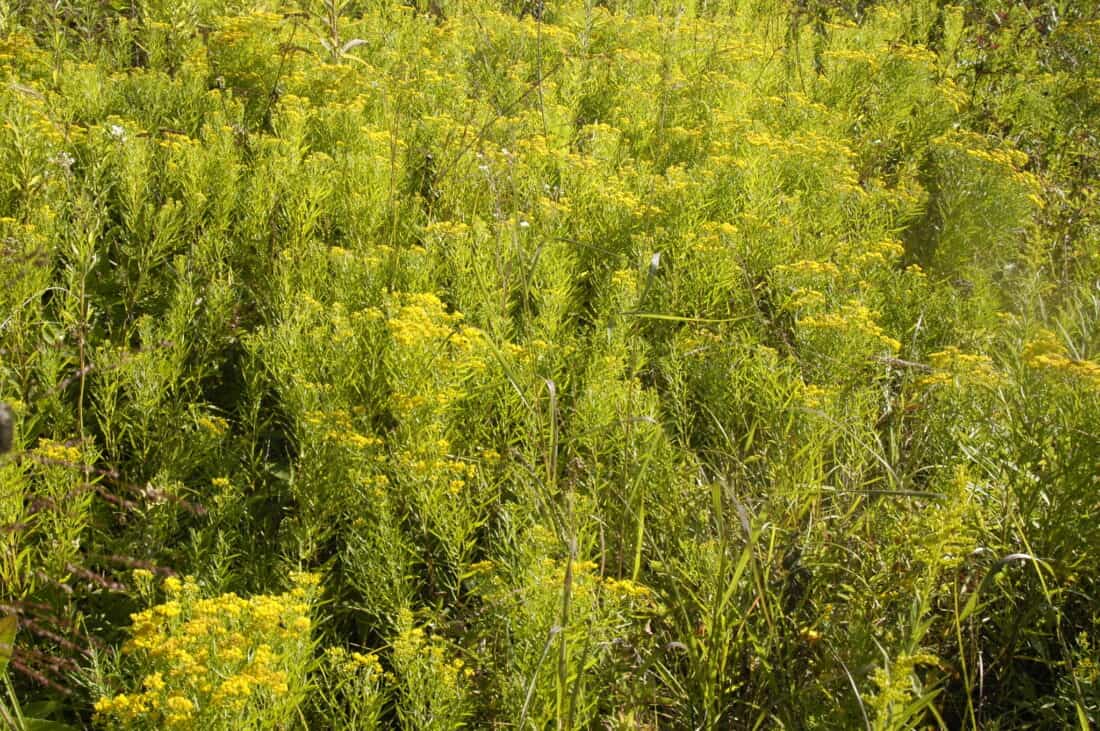
Grass-leaved goldenrod (solidago gramnifolia) is also classified as Euthamia graminifolia. Narrow leaves and a flat head of flowers are among its defining characteristics.
- Grass-like stems with smooth and narrow leaves hold up showy, flat-topped flower clusters of bright yellow flowers.
- Tough and vigorous and very adaptable to many soil types.
- Happiest in moist, sunny sites but can take dry conditions with part shade. If conditions are too preferable, they can become aggressive.
- These are the really tough and low maintenance – they are plants that, when given the correct conditions, will thrive over many years and will seldom need dividing.
- Hardy in zones: 3-9, they bloom in August and September. Their height can range from 24-48″.
Solidago rugosa– Rough-leaf Goldenrod
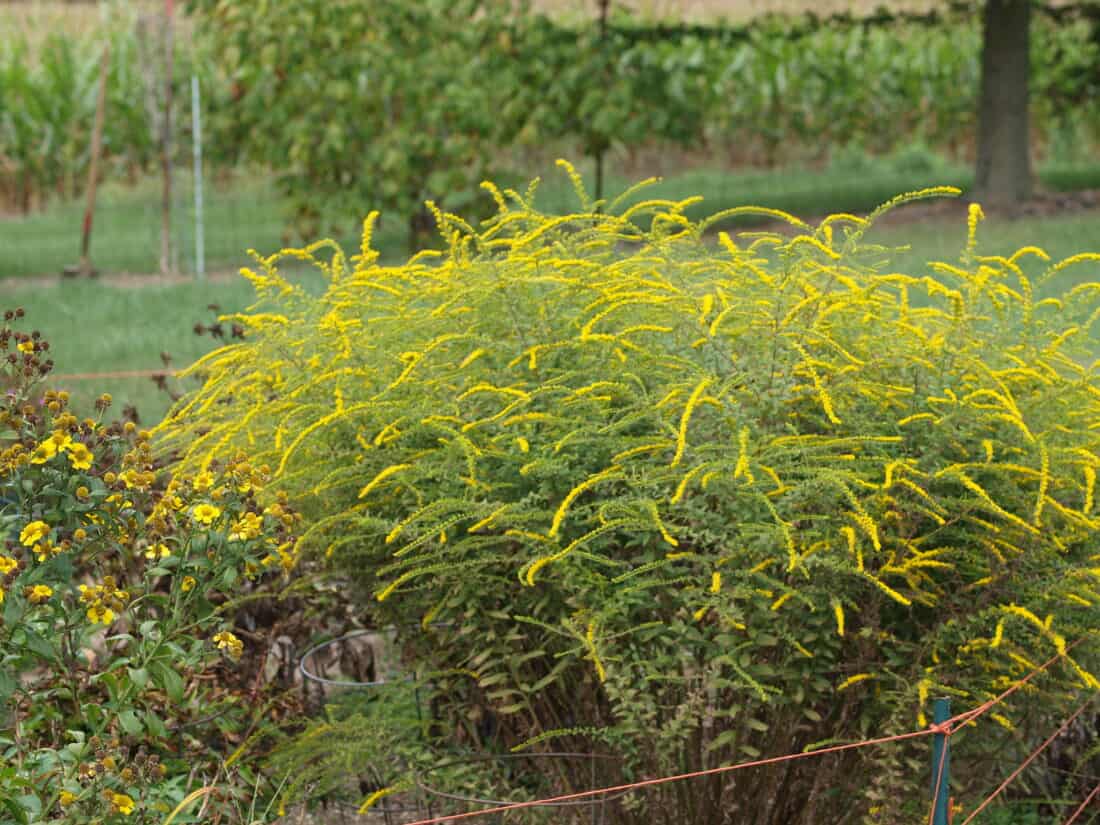
Solidago rugosa fireworks is a godenrod is a cultivar of Solidago rugosa that has become very popular for its flowers that resemble fireworks. It is known for:
- Arching spikes of light yellow flowers cover this clump, which forms native in late summer and attracts a variety of native fauna.
- Leaves have a rough, wrinkled appearance with a slightly bronze cast.
- Tolerates a wide variety of conditions but prefers consistent moisture
- Hardy to zones 3-9 and blooming in August and September. This variety is a striking beauty at a height of 36-60”.
Solidago puberula– Downy Goldenrod
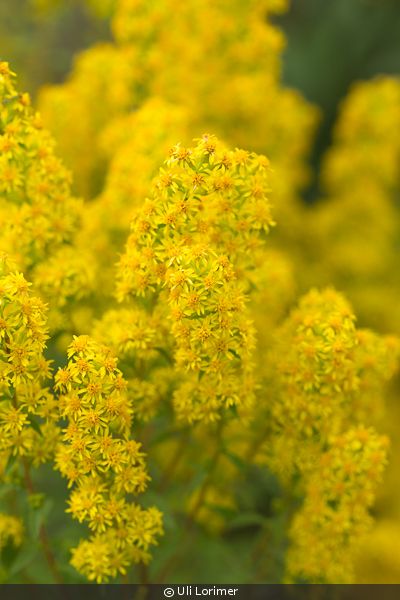
Solidago puberula
Image by Uli Lorimer
Downy Goldenrod
Image from the Wild Seed Project.
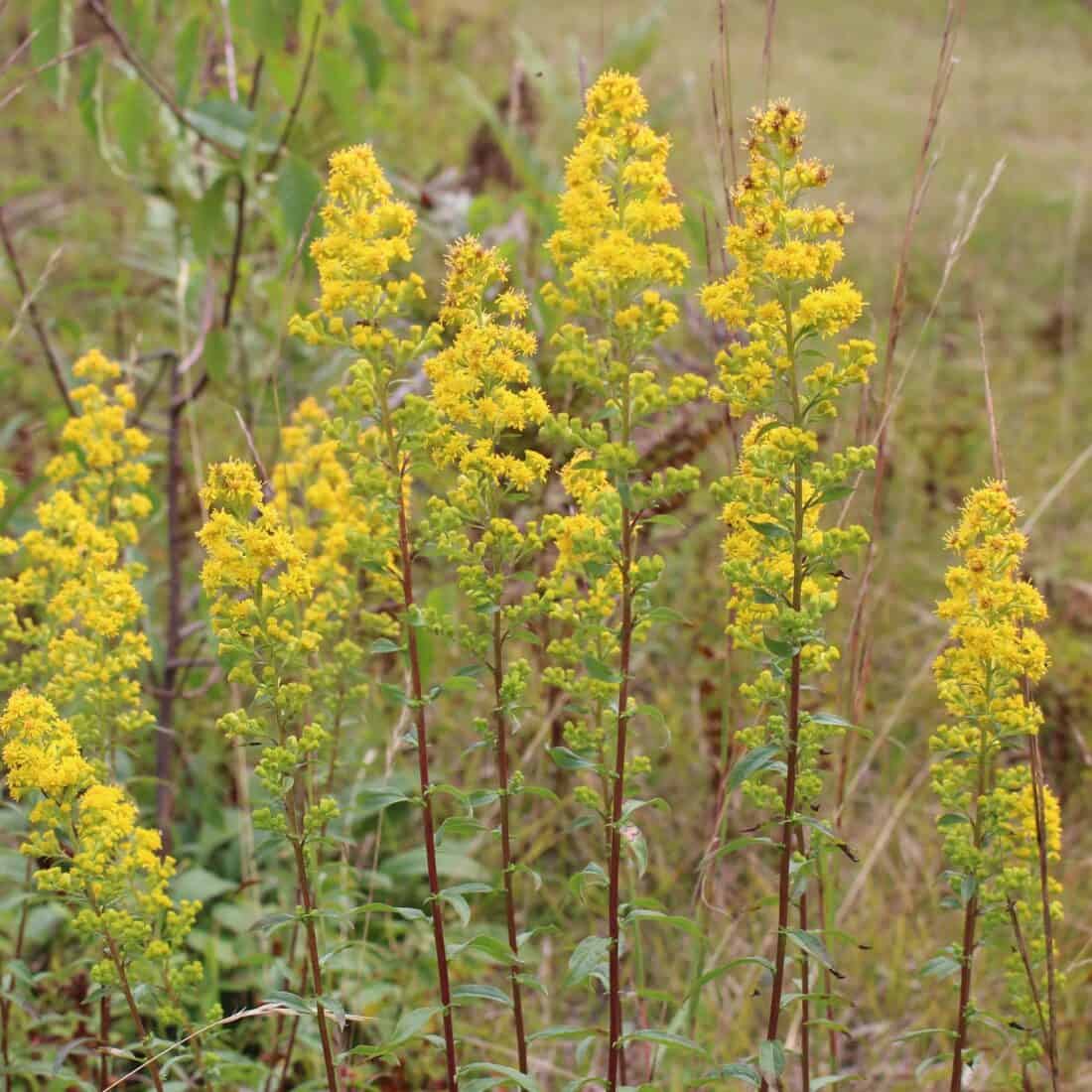
Downy goldenrod (solidago puberula) is a smaller plant, but it carries a big punch with its bigger heads of flowers on straight stems.
- Dense wand-like spikes of yellow.
- Stays stout and erect and makes a fantastic cut flower. It also dries well.
- Tolerates poor and dry sandy soils and won’t run rampant.
- Like grass-leaved goldenrod, it is also tough, low maintenance, and will thrive over many years without needing to be divided.
- Native from Novascotia to Florida, it is hardy in zones 3-9. It blooms from August to October, and this popular variety is on the shorter side at 12-36” tall.
Solidago sempervirens– Seaside Goldenrod

If you are building a landscape in a coastal region, the Seaside goldenrod (solidago sempervirens) is a pretty plant that is a little less wild-looking and a little more leafy and fresh.
- Salt and drought tolerant late season bloomer that provides bright visual interest.
- Tolerates poor and dry sandy soils and won’t run rampant.
- Long-lived with little to no maintenance.
- Hardiness in USDA zones 3-9. Bloom from August to October Prefers sun to partial shade
- Grows to a height: 24-40”
Solidago speciosa– Showy Goldenrod
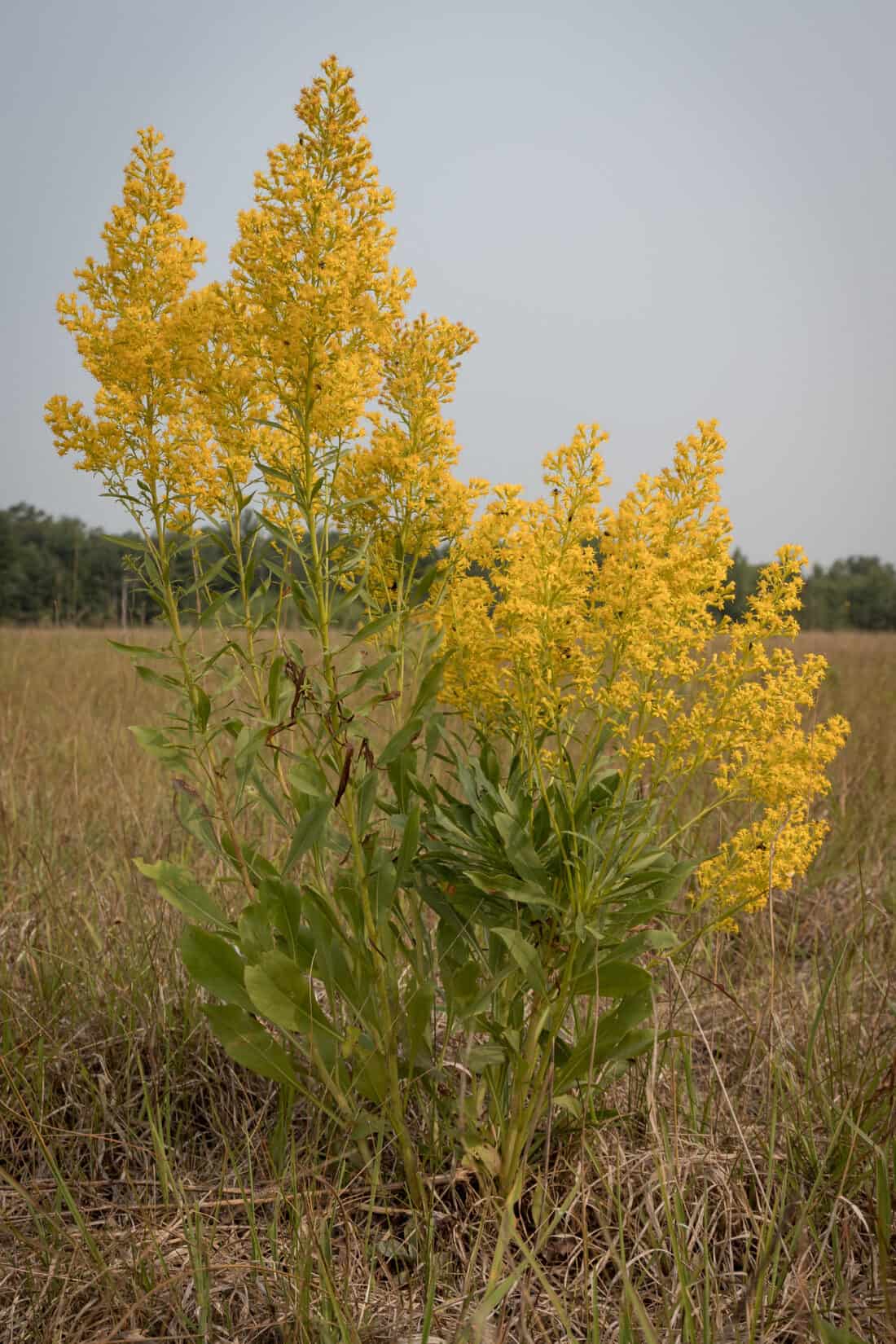
Showy goldenrod is often described as elegant and, well, showy. It has big bright blooms and the best part about it is that Solidago speciosa has a fibrous root system. Unlike other goldenrods that have rhizomatous roots (that spread readily if in ideal conditions) – this variety will only spread by increasing the size of clumps.
- Showiest of all goldenrods and blooms a bit later than most others.
- Large, feathery, dense plumes of pale yellow.
- Tolerates mesic soils. Stays stout and erect and makes a fantastic cut flower. Dries well.
- Tolerates poor and dry sandy soils and won’t run rampant.
- It does not need to be split after a few years, and it is extremely low maintenance.
- Hardy in zones 3-9. Blooms August October. Grows to 12-36”
Solidago nemoralis- Old Field Goldenrod
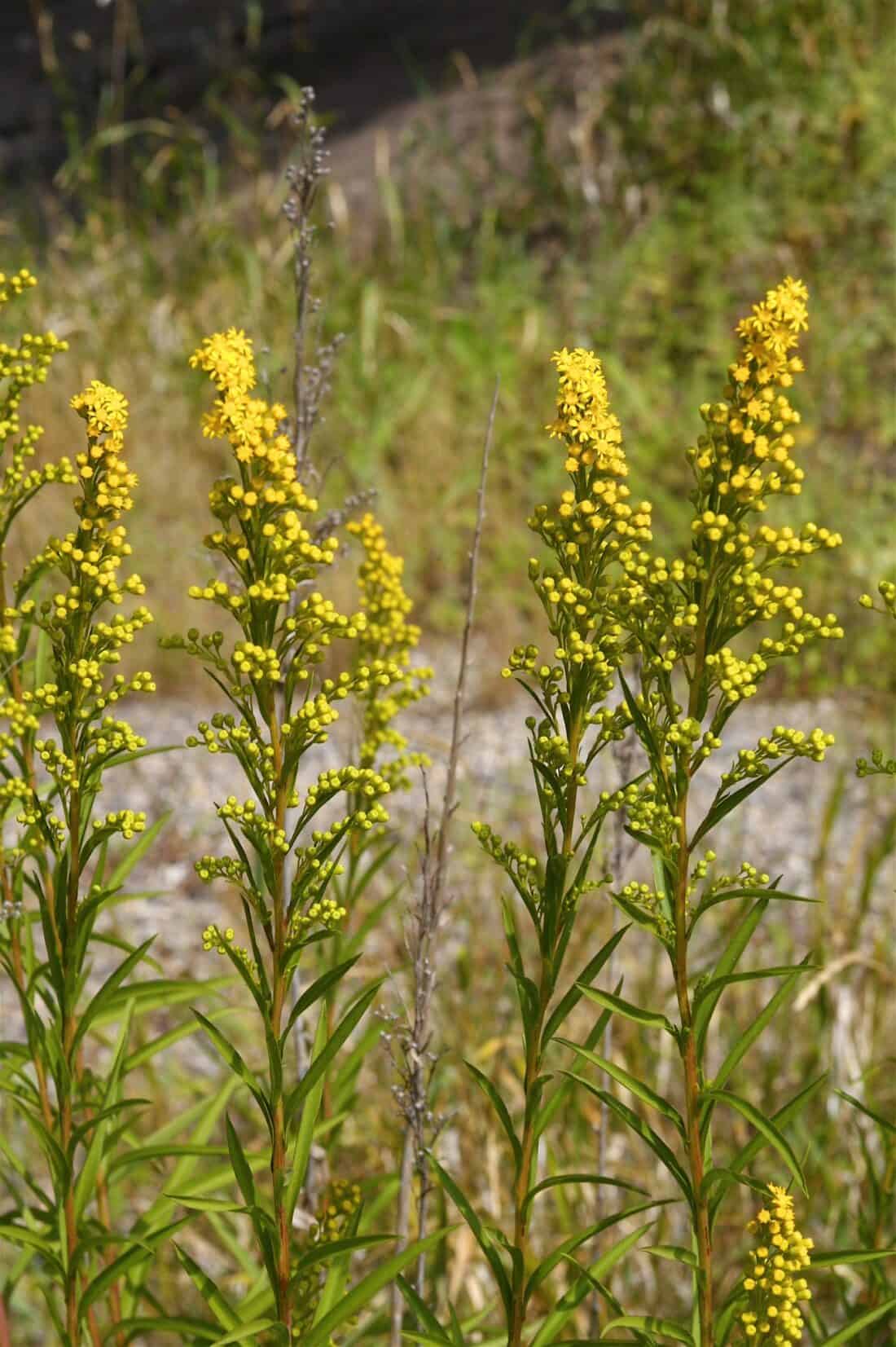
Grey goldenrod (solidago nemoralis) is a slender stemmed plant and rarely reaches over 2 feet, making it one of the shortest varieties.
- Tough and highly adaptable upright, un-branched foliage.
- Yellow wand-like late-season flowers last for months.
- Excellent plant for difficult areas. Keep dryer to prevent aggressive spreading.
- USDA hardiness in zones 3-9. Blooms August-October.
- Height: 12-30”
All data for this post was originally compiled by Roanne Robbins and Van Berkum Nurseries.
+comments+